Isak’s Liverpool link grows as Newcastle absence continues
Sweden striker Alexander Isak heavily linked to Liverpool move after reportedly telling Newcastle he wants to leave. Newcastle have rejected Liverpool’s opening bid to sign unsettled Sweden striker Alexander Isak, according to reports. Isak has been training at his old club Real Sociedad this week after reportedly telling Newcastle he wants to leave St James’ Park. The 25-year-old has been linked with Liverpool since the end of last season, and the Premier League champions are now believed to have formalised their interest with an offer of about 110 million pounds ($146m) plus potential add-ons. But Newcastle, who reportedly value Isak at 150 million pounds ($199m), remain eager to hold on to their prize asset and have rebuffed Liverpool’s initial bid. Isak, who joined Newcastle in a 60-million-pound ($80m) move from Real Sociedad in 2022, scored 23 Premier League goals last season to help Newcastle qualify for the Champions League. He has three years left on his Newcastle contract, but did not travel to Asia for the Magpies’ ongoing preseason tour, with the club saying he had a minor thigh injury. On Thursday, Real Sociedad confirmed he was at their Zubieta facility with his own trainers. It was reported on Friday that Newcastle had told Isak he could agree a new deal containing a get-out clause for next year, but he responded by insisting he wants to move now. Liverpool manager Arne Slot has already bolstered his attacking options by signing Eintracht Frankfurt striker Hugo Ekitike and Bayer Leverkusen playmaker Florian Wirtz during the current transfer window. But the Reds are eager to make their forward line even more formidable by adding Isak, as they look to win back-to-back English titles for the first time since the 1980s. Advertisement Newcastle boss Eddie Howe struck a defiant note earlier this week when he said: “He is still our player. He’s contracted to us. “We, to a degree, control what is next for him. I would love to believe all possibilities are still available to us. “My wish is that he stays, but that’s not in my full control.” Liverpool have spent more than 250 million pounds ($332m) so far in the summer window, with Milos Kerkez, Jeremie Frimpong and Giorgi Mamardashvili joining Wirtz and Ekitike at Anfield. Adblock test (Why?)
What has triggered deadly clashes at Uganda’s border with South Sudan?
Fighting between the armies of Uganda and neighbouring South Sudan, which are longtime allies, erupted this week over demarcations in disputed border regions, leading to the death of at least four soldiers, according to official reports from both sides. Thousands of civilians have since been displaced in affected areas as people fled to safety amid the rare outbreak of violence. A gunfight began on Monday and comes as South Sudan, one of the world’s youngest countries, is facing renewed violence due to fracturing within the government of President Salva Kiir that has led to fighting between South Sudanese troops and a rebel armed group. Uganda has been pivotal in keeping that issue contained by deploying troops to assist Kiir’s forces. However, the latest conflict between the two countries’ armies is raising questions regarding the state of that alliance. A truck enters a checkpoint at the Elegu border point between Uganda and South Sudan in May 2020 [Sally Hayden/SOPA Images/LightRocket via Getty Images] What has happened? There are conflicting accounts of the events that began at about 4:25pm local time (13:25 GMT) on Monday, making it hard to pinpoint which side struck first. The two agree on where the fighting took place, but each claims the site as being in its own territory. Ugandan military spokesperson Major-General Felix Kulayigye told reporters on Wednesday that the fighting broke out when South Sudanese soldiers crossed into Ugandan territory in the state of West Nile and set up camp there. The South Sudanese soldiers refused to leave after being told to do so, Kulayigye said, resulting in the Ugandan side having “to apply force”. Advertisement A Ugandan soldier was killed in the skirmish that ensued, Kulayigye added, after which the Ugandan side retaliated and opened fire, killing three South Sudanese soldiers. However, South Sudan military spokesperson Major-General Lul Ruai Koang said in a Facebook post earlier on Tuesday that armies of the “two sisterly republics” had exchanged fire on the South Sudanese side, in the Kajo Keji County of Central Equatoria state. Both sides suffered casualties, he said, without giving more details. Wani Jackson Mule, a local leader in Kajo-Keji County, backed up this account in a Facebook post on Wednesday and added that Ugandan forces had launched a “surprise attack” on South Sudanese territory. Mule said local officials had counted the bodies of five South Sudanese officers. Kajo-Keji County army commander Brigadier General Henry Buri, in the same statement as Mule, said the Ugandan forces had been “heavily armed with tanks and artillery”, and that they had targeted a joint security force unit stationed to protect civilians, who are often attacked by criminal groups in the area. The army general identified the deceased men as two South Sudanese soldiers, two police officers and one prison officer. The fighting affected border villages and caused panic as people fled from the area, packing their belongings hurriedly on their backs, according to residents speaking to the media. Children were lost in the chaos. Photos on social media showed crowds gathered as local priests supervised the collection and transport of remains. Map of Uganda and South Sudan [Al Jazeera] What is the border conflict about? Uganda and South Sudan have previously clashed over demarcations along their joint border, although those events have been few and far between. As with the Monday clash, the fighting is often characterised by tension and violence. However, heavy artillery fighting, which occurred on Monday, is rare. Problems at the border date back to the demarcations made during the British colonial era between Sudan, which South Sudan was once a part of, and Uganda. Despite setting up a joint demarcation committee (unknown when), the two countries have failed to agree on border points. In November 2010, just months before an anticipated South Sudanese referendum on independence from Sudan, clashes erupted after the Ugandan government accused the Sudanese army of attacking Dengolo village in the West Nile district of Moyo on the Ugandan side in multiple raids, and of arresting Ugandan villagers who were accused of crossing the border to cut down timber. Advertisement A South Sudanese army spokesperson denied the allegations and suggested that the assailants could have been from the forestry commission. Uganda’s President Yoweri Museveni and South Sudan’s Kiir met a few days later and pledged to finalise the border issue, but that did not happen. Little was reported on the matter for several years after that, but in October 2020, two Ugandan soldiers and two South Sudanese soldiers were killed when the two sides attacked each other in Pogee, Magwi County of South Sudan, which connects to Gulu district of northern Uganda. The area includes disputed territory. Some reports claimed that three South Sudanese were killed. Each side blamed the other for starting the fight. In September 2024, the Ugandan parliament urged the government to expedite the demarcation process, adding that the lack of clear borders was fuelling insecurity in parts of rural Uganda, and Ugandan forces could not effectively pursue criminal cattle rustling groups operating in the border area as a result. Following the latest flare-up of violence this week, the countries have pledged to form a new joint committee to investigate the clashes, South Sudan military spokesperson, General Koang, said in a statement on Tuesday. The committee will also investigate any recurring issues along the border in a bid to resolve them, the statement read. South Sudan’s President Salva Kiir, right, and Vice President Riek Machar, left, attend a mass led by Pope Francis at the John Garang Mausoleum in Juba, South Sudan, on Sunday, February 5, 2023 [Ben Curtis/AP] Why does Uganda provide military support to South Sudan’s President Kiir? Uganda’s Museveni has been a staunch ally of South Sudan’s independence leader, Kiir, and his Sudan People’s Liberation Movement (SPLM) party for many years. Museveni supported South Sudan’s liberation war against Sudan, especially following alleged collusion between the former Sudanese leader Omar al-Bashir and the Lord’s Resistance Army (LRA), a rebel group originally formed in Uganda but
Switzerland says ‘disappointed’ by Trump tariffs, will try to negotiate

Switzerland says it will try to negotiate its way out of stiff United States tariffs, hours after US President Donald Trump’s administration shocked the European country by announcing plans to impose a 39-percent tariff rate on Swiss goods. The Swiss government said on Friday that it was “disappointed” and would decide how to proceed after Trump unveiled the 39-percent rate, more than double the 15 percent being applied for most European Union imports into the US. The new tariffs, which are set to go into effect on August 7, would prove painful for several key Swiss industries, including manufacturing and watchmaking. The Swiss government said in a statement on social media that it remains in contact with US authorities and “still hopes to find a negotiated solution”. “The Federal Council notes with great regret the intention of the US to unilaterally burden Swiss imports with considerable import duties despite the progress made in bilateral talks and Switzerland’s very constructive position,” it added. The Trump administration unveiled a range of new tariffs on many US trading partners on Thursday, saying the move aimed to address a “continued lack of reciprocity in our bilateral trade relationships”. Nearly 70 countries now face import duties that were due to come into force on Friday. But most will now begin on August 7, giving countries a few days to try to reach an agreement with Washington to stave off or reduce their respective tariff rate. “Everyone had been focused on August 1 … and now there is a new deadline,” Al Jazeera’s Kimberly Halkett reported from the White House on Friday morning. Advertisement “The reason is so that there can be a little bit more time and breathing space to get some more deals done. There were a few that were very close but didn’t quite make the deadline, and so the White House [said] this will allow … for these final agreements to be worked out.” Trump negotiated trade frameworks over the past few weeks with the EU, Japan, South Korea, Indonesia and the Philippines — allowing the US president to claim victories as other nations sought to limit his threat of charging even higher tariff rates. He said on Thursday there were agreements with other countries, but he declined to name them. Asked on Friday if countries were happy with the rates set by Trump, US Trade Representative Jamieson Greer said, “A lot of them are.” The new tariffs also include a 35-percent duty on many goods from Canada, 50 percent for Brazil, and 20 percent for Taiwan. Taiwan said its rate was “temporary” and it expected to reach a lower figure. The Trump administration said it decided to impose 39-percent tariffs on Switzerland because of what it called the European country’s refusal to make “meaningful concessions” by dropping trade barriers. “Switzerland, being one of the wealthiest, highest-income countries on Earth, cannot expect the United States to tolerate a one-sided trade relationship,” a White House official said on Friday. Swissmem, a group representing the mechanical and electrical engineering industries, said it was “really stunned” by the US move. “It’s a massive shock for the export industry and for the whole country,” said Deputy Director Jean-Philippe Kohl. “The tariffs are not based on any rational basis and are totally arbitrary … This tariff will hit Swiss industry very hard, especially as our competitors in the European Union, Britain and Japan have much lower tariffs.” Stock market tumbles But Trump’s new tariffs have created yet more uncertainty, with many details unclear. Global stock markets stumbled on Friday, with Europe’s STOXX 600 down 1.8 percent on the day and 2.5 percent on the week, on track for its biggest weekly drop since Trump announced his first major wave of tariffs on April 2. Wall Street also opened sharply lower on Friday. Reporting from the New York Stock Exchange, Al Jazeera’s Kristen Saloomey explained that US markets were “definitely down” following the tariffs announcement, but the drop was not as bad as what was seen after the first round of tariffs in April. “When the first round of tariffs were enacted, the market did drop substantially, but then clawed back a lot of the losses about a month later as deals were worked out. A lot of economists are saying that this time around, the market has priced in tariffs,” Saloomey said. Advertisement Still, she said, “the concern is still that the underlying fundamentals of the economy are under strain and the full weight of the tariffs” has yet to be seen. Adblock test (Why?)
Trump envoy to visit Gaza aid sites as Israel accused of starvation policy
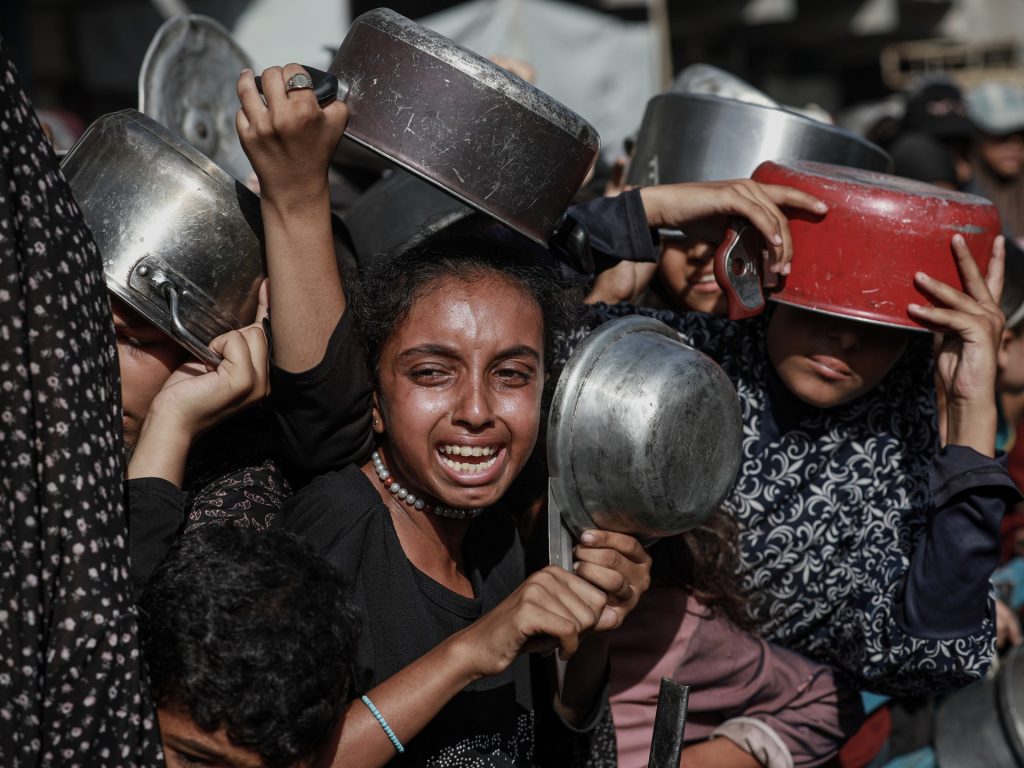
US envoy Steve Witkoff to visit aid distribution sites in Gaza to assess ‘dire situation on the ground’: White House United States President Donald Trump’s special envoy, Steve Witkoff, will travel to Gaza to inspect aid distribution as pressure mounts on Israel over its starvation policy in the war-torn Palestinian territory. Witkoff will travel to Gaza on Friday with US ambassador to Israel, Mike Huckabee, to inspect aid distribution as condemnation of Israel grows over famine in Gaza and reports that more than 1,000 desperately hungry Palestinians have been killed since May at food distribution sites operated by the notorious US- and Israeli-backed GHF. White House Press Secretary Karoline Leavitt told reporters on Thursday that Witkoff would visit “distribution sites and secure a plan to deliver more food and meet with local Gazans to hear firsthand about this dire situation on the ground”. “The special envoy and the ambassador will brief the president immediately after their visit to approve a final plan for food and aid distribution into the region,” Leavitt said. The visit by the top US envoy comes a day after more than 50 Palestinians were killed in Israeli attacks across the territory and health officials reported the deaths of two more children from starvation, adding to the Gaza Health Ministry’s confirmed death toll of 154 people who have died from “famine and malnutrition” – including 89 children – in recent weeks. Witkoff met with Israel’s Prime Minister Benjamin Netanyahu shortly after his arrival in the country on Thursday, the Israeli leader’s office said. Earlier this week, President Trump contradicted Netanyahu’s insistence that reports of hunger in Gaza were untrue, with the US leader saying the enclave was experiencing “real starvation”. Advertisement The United Nations and independent experts had warned for months that starvation was taking hold in Gaza due to the Israeli military blockade on humanitarian relief, and this week, they said that “famine is now unfolding”. Angered by Israel’s denial of aid and ongoing attacks on Gaza’s population, the United Kingdom, Canada and Portugal this week became the latest Western governments to announce plans to recognise a Palestinian state. Last week, French President Emmanuel Macron said that France will recognise Palestine at the UN General Assembly in September, following Spain, Norway and Ireland’s lead. Some 142 countries out of the 193 members of the UN currently recognise or plan to recognise a Palestinian state. Following a meeting with Netanyahu in Jerusalem on Thursday, Germany’s Foreign Minister Johann Wadephul said “the humanitarian disaster in Gaza is beyond imagination”. “Here, the Israeli government must act quickly, safely and effectively to provide humanitarian and medical aid to prevent mass starvation from becoming a reality,” he said. “I have the impression that this has been understood today.” Once a vibrant centre of Palestinian life, much of Gaza has been pulverised by Israeli bombardments and more than 60,000 Palestinians killed, and almost 150,000 wounded, since October 2023, after the Hamas attacks on Israel, which killed an estimated 1,139 people. Adblock test (Why?)
Russia-Ukraine war: List of key events, day 1,254
Here are the key events on day 1,254 of Russia’s war on Ukraine. Here is how things stand on Friday, August 1: Fighting Russia launched waves of missiles and drones at Kyiv before dawn on Thursday, killing 16 people, including two children, and wounding more than 100 others, officials in the Ukrainian capital said. Russia’s Ministry of Defence claimed it targeted and hit Ukrainian military airfields and ammunition depots as well as businesses linked to what it called Kyiv’s military-industrial complex. Russia claimed to have taken full control of the shattered town of Chasiv Yar in eastern Ukraine after nearly 16 months of fighting, an assertion which Kyiv dismissed as “propaganda”. Ukrainian drones, operated by the state security agency SBU, struck an electronics plant which produces combat control systems for the Russian military in the western Russian city of Penza. Military aid A powerful United States Senate committee has approved a military spending bill that includes about $1bn to support Ukraine, despite US President Donald Trump’s administration having asked Congress to eliminate such funding in its budget request. Ceasefire US special envoy Steve Witkoff will travel to Russia after his current trip to Israel, President Trump said. Trump did not provide an itinerary for Witkoff, who has held extensive ceasefire talks in Moscow with Russian President Vladimir Putin in the past. Trump has sharply criticised Russia’s “disgusting” behaviour against Ukraine and said he plans to impose sanctions on Moscow if no agreement can be reached on a ceasefire. The US president has given Putin until August 8 to reach a deal to halt the fighting. The US reiterated its Ukraine war ceasefire deadline to the United Nations Security Council, with senior US diplomat John Kelley telling the 15-member council that “both Russia and Ukraine must negotiate a ceasefire and durable peace”. Kelley said: “It is time to make a deal. President Trump has made clear this must be done by August 8. The United States is prepared to implement additional measures to secure peace”. Trump also told Dmitry Medvedev to “watch his words” after the deputy chairman of Russia’s Security Council said Washington’s threats of hitting Moscow and buyers of its oil with punitive tariffs were “a game of ultimatums” and a step closer towards a war between Russia and the US. In response, the former Russian president said Trump should remember that Moscow possessed Soviet-era nuclear strike capabilities of last resort. Advertisement Ukrainian affairs Ukraine’s parliament voted to restore the independence of two key anticorruption agencies, moving to defuse the country’s biggest political crisis since Russia’s invasion. Lawmakers voted 331 to 0 in favour of the bill, which President Volodymyr Zelenskyy submitted last week following pressure from thousands of protesters and top European officials to reverse course on the issue. Regional developments Chinese naval vessels have steamed into Russia’s far eastern port of Vladivostok in advance of joint drills scheduled from August 1-5. Adblock test (Why?)
Who’s included in Trump’s latest round of adjusted tariffs?
US President Donald Trump set the following rates by region in his executive order on Thursday, titled “Further Modifying the Reciprocal Tariff Rates”: Africa Algeria 30% Angola 15% Botswana 15% Cameroon 15% Chad 15% Ivory Coast 15% Democratic Republic of the Congo 15% Equatorial Guinea 15% Ghana 15% Guyana 15% Lesotho 15% Libya 30% Madagascar 15% Malawi 15% Mauritius 15% Mozambique 15% Namibia 15% South Africa 30% Tunisia 25% Uganda 15% Zambia 15% Zimbabwe 15% Asia Pacific Bangladesh 20% Cambodia 19% Fiji 15% India 25% Indonesia 19% Japan 15% Laos 40% Malaysia 19% Myanmar (Burma) 40% Nauru 15% New Zealand 15% Pakistan 19% Papua New Guinea 15% Philippines 19% South Korea 15% Sri Lanka 20% Taiwan 20% Thailand 19% Vanuatu 15% Vietnam 20% Europe Bosnia and Herzegovina 30% European Union: 15% for most goods Iceland 15% Liechtenstein 15% Moldova 25% North Macedonia 15% Norway 15% Serbia 35% Switzerland 39% United Kingdom 10% Middle East and Central Asia Afghanistan 15% Brunei 25% Iraq 35% Israel 15% Jordan 15% Kazakhstan 25% Syria 41% Turkiye 15% North and South America Bolivia 15% Brazil 10% Canada 35% Costa Rica 15% Ecuador 15% Falkland Islands 10% Nicaragua 18% Trinidad and Tobago 15% Venezuela 15% Adblock test (Why?)
Laura Dahlmeier: Recovery of Olympian killed in Pakistan abandoned

German Olympic biathlete Laura Dahlmeier was struck by falling rocks while scaling Laila Peak in Pakistan on Wednesday. Authorities have abandoned efforts to recover the body of German Olympic biathlete Laura Dahlmeier, who died in a mountaineering accident in Pakistan this week. Dahlmeier was confirmed dead on Wednesday, having been hit by falling rocks while climbing at an altitude of 5,700 metres (18,700 feet) on Laila Peak in the Karakoram range. Attempts to recover her body were abandoned due to “dangerous” conditions at the site, Dahlmeier’s management agency said Thursday. In consultation with the Alpine Club of Pakistan, the agency said her relatives would “continue to monitor the situation … and are keeping the option of arranging a rescue at a later date”. Several of Dahlmeier’s colleagues confirmed the two-time Olympic gold medallist had said she did not want her body recovered if it put any would-be rescuers at risk. German mountaineer Thomas Huber was part of a team that had attempted a rescue, but told reporters on Thursday, “We have decided she should stay, because that was her wish.” Another member of the rescue team, American Jackson Marvell, told AFP it would be “disrespectful” to recover her body contrary to her wishes. Marvell said, “The recovery of Laura’s body will be possible, but it involves incredible risks, both on foot and by helicopter.” Marina Eva Krauss, the climbing partner of the German double Olympic biathlon champion Laura Dahlmeier, who died after a mountaineering accident at an altitude of approximately 5,700m (18,700 feet) at Laila Peak, addresses a press conference in Skardu in the Gilgit-Baltistan region of Pakistan [Qasim Shah/Reuters] Dahlmeier’s climbing partner Marina Krauss, who was with her at the time of the incident, said at a press conference on Thursday that the former Olympian did not move after being caught in a rockfall. Advertisement “I saw Laura being hit by a huge rock and then being thrown against the wall. And from that moment on, she didn’t move again,” Krauss told reporters. Krauss said she was unable to reach Dahlmeier and called for outside support. “It was impossible for me to get there safely,” she said. “It was clear to me the only way to help her was to call a helicopter. She didn’t move, she didn’t show any signs [of movement]. I called out to her, but there was no response. “She only had a chance if help arrived immediately.” Dahlmeier won seven world championship gold medals, and at the 2018 Winter Olympics in Pyeongchang, South Korea, she became the first woman biathlete to win both the sprint and the pursuit at the same Games. Dahlmeier retired from professional competition in 2019 at the age of 25. Adblock test (Why?)
‘We are starving’: Bread becomes a distant dream for Palestinians in Gaza

Gaza City, Gaza Strip – Hani Abu Rizq walks through Gaza City’s wrecked streets with two bricks tied against his stomach as the rope cuts into his clothes, which hang loose from the weight he has lost. The 31-year-old searches desperately for food to feed his mother and seven siblings with the bricks pressed against his belly – an ancient technique he never imagined he would need. “We’re starved,” he says, his voice hollow with exhaustion. “Even starvation as a word falls short of what we’re all feeling,” he adds, his eyes following people walking past. He adjusts the rope around his waist, a gesture that has become as routine as breathing. “I went back to what people did in ancient times, tying stones around my belly to try to quiet my hunger. This isn’t just war. It’s an intentional famine.” The fading of Gaza’s heartbeat Before October 7, 2023, and the start of Israel’s war on Gaza, food was the heartbeat of daily life in Gaza. The days in Gaza were built around communal meals – breakfasts of zaatar and glistening olive oil, lunches of layered maqlooba and musakhan that filled homes with warmth, and evenings spent around trays of rice, tender meat and seasonal salads sparkling with herbs from gardens. Abu Rizq remembers those days with the ache of someone mourning the dead. The unmarried man used to love dining and gathering with family and friends. He speaks of comfortable dining rooms where home-cooked feasts were displayed like art and evenings were filled with desserts and spiced drinks that lingered on tongues and in memory. Advertisement “Now, we buy sugar and salt by the gram,” he says, his hands gesturing towards empty market stalls that once overflowed with produce. “A tomato or cucumber is a luxury – a dream. Gaza has become more expensive than world capitals, and we have nothing.” Over nearly 22 months of the war, the amount of food in Gaza has been drastically reduced. The besieged enclave has been under the complete mercy of Israel, which has curtailed access to everything from flour to cooking gas. But since March 2, the humanitarian and essential items allowed in have plummeted to a frightening low. Israel completely blocked all food from March to May and has since permitted only minimal aid deliveries, prompting widespread international condemnation. Hani Abu Rizq on Gaza’s shores before the war [Courtesy of Hani Abu Rizq] Watching children suffer According to Gaza’s Ministry of Health, at least 159 Palestinians – 90 of whom are children and infants – have died of malnutrition and dehydration during the war as of Thursday. The World Food Programme warns of a “full-blown famine” spreading across the enclave while UNICEF reports that one in three children under five in northern Gaza suffers acute malnutrition. Fidaa Hassan, a former nurse and mother of three from Jabalia refugee camp, knows the signs of malnutrition. “I studied them,” she tells Al Jazeera from her displaced family’s shelter in western Gaza. “Now I see them in my own kids.” Her youngest child, two-year-old Hassan, wakes up every morning crying for food, asking for bread that doesn’t exist. “We celebrated each of my children’s birthdays with nice parties [before the war] – except for … Hassan. He turned two several months ago, and I couldn’t even give him a proper meal,” she says. Her 10-year-old, Firas, she adds, shows visible signs of severe malnutrition that she recognises with painful clarity. Before the war, her home buzzed with life around mealtimes. “We used to eat three or four times a day,” she recalls. “Lunch was a time to gather. Winter evenings were filled with the aroma of lentil soup. We spent spring afternoons preparing stuffed vine leaves with such care. “Now we … sleep hungry.” “There’s no flour, no bread, nothing to fill our stomachs,” she says, holding Hassan as his small body trembles. “We haven’t had a bite of bread in over two weeks. A kilo of flour costs 150 shekels [$40], and we can’t afford that.” Hassan was six months old when the bombing began. Now, at two years old, he bears little resemblance to a healthy child his age. Advertisement The United Nations has repeatedly warned that Israel’s siege and restrictions on humanitarian aid are creating man-made famine conditions. According to the UN Office for the Coordination of Humanitarian Affairs, only a fraction of the 600 truckloads of food and supplies required in Gaza daily, under normal circumstances, are coming through. The Integrated Food Security Phase Classification system has placed northern Gaza in Phase 5: catastrophe/famine. Amid a lack of security, the trickle of humanitarian aid allowed to enter Gaza is subject to gangs and looting, preventing people in need from accessing scarce supplies. Furthermore, hundreds of desperate aid seekers have been shot dead by Israeli soldiers while trying to get humanitarian aid provided by the United States- and Israeli-backed GHF since May. Abundance as a distant memory Hala Mohammed, 32, cradles three-year-old Qusai in a relative’s overcrowded shelter in Remal, a neighbourhood of Gaza City, as she describes how she has to watch him cry in hunger every morning, his little voice breaking. “There’s no flour, no sugar, no milk,” she says, her arms wrapped protectively around the child, who has known only war for most of his life. “We bake lentils like dough and cook plain pasta just to fill our stomachs. But hunger is stronger.” This is devastating for someone who grew up in Gaza’s rich culture of hospitality and generosity and had a comfortable life in the Tuffah neighbourhood. Before displacement forced her and her husband to flee west with Qusai, every milestone called for nice meals – New Year’s feasts, Mother’s Day gatherings, birthday parties for her husband, her mother-in-law and Qusai. “Many of our memories were created around shared meals. Now meals [have become the] memory,” she says. “My son asks for food and I just hold him,” she continues, her voice cracking.
Palestinian man dies in Israeli settler arson attack in occupied West Bank

Khamis Ayyad, 40, died of smoke inhalation after settlers set fire to vehicles in town of Silwad, Health Ministry says. A Palestinian man has been killed after Israeli settlers set fire to vehicles and homes in a town in the occupied West Bank, the Palestinian Ministry of Health says. The ministry said on Thursday that Khamis Ayyad, 40, died due to smoke inhalation after settlers attacked Silwad, northeast of Ramallah, around dawn. Ayyad and others had been trying to extinguish the fires, local residents said. Palestinian news agency Wafa reported that the settlers also attacked the nearby villages of Khirbet Abu Falah and Rammun, setting fire to more vehicles. A relative of Ayyad’s, and a resident of Silwad, said they woke up at 2am (23:00 GMT) to see “flames devouring vehicles across the neighbourhood”. “The townspeople panicked and rushed to extinguish the fires engulfing the cars and buildings,” they said, explaining that Ayyad had been trying to put out a fire burning his brother’s car. Ayyad’s death comes amid burgeoning Israeli settler and military violence across the West Bank in tandem with Israel’s war on the Gaza Strip. Settlers have been attacking Palestinians and their property with impunity, backed by the Israeli army. Earlier this week, Awdah Hathaleen, a Palestinian from Masafer Yatta, the community whose resistance to Israeli settler violence was documented in the Oscar-winning film No Other Land, with which he helped, was killed by an Israeli settler. The suspect, identified as Yinon Levi, was placed under house arrest on Tuesday after a Magistrate Court in Jerusalem declined to keep him in custody. People gather next to a burned car after the Israeli settler attack in Silwad [Ammar Awad/Reuters] According to the latest data from the UN’s humanitarian office (OCHA), at least 159 Palestinians have been killed by Israeli troops in the West Bank between January 1 and July 21 of this year. Advertisement Hundreds of Israeli settler attacks against Palestinians have also been reported so far in 2025, including at least 27 incidents that resulted in casualties, property damage, or both, between July 15 and 21, OCHA said. Observers have warned that the uptick in Israeli violence aims to forcibly displace Palestinians and pave the way for Israel to formally annex the territory, as tens of thousands have been forced out of their homes in recent months across the West Bank. Earlier this month, the Israeli parliament – the Knesset – overwhelmingly voted in favour of a symbolic motion calling for Israel to annex the West Bank. On Thursday, Israeli Justice Minister Yariv Levin and Defence Minister Israel Katz said in a joint statement that “there is a moment of opportunity that must not be missed” to exert Israeli sovereignty over the West Bank, according to a Times of Israel report. “Ministers Katz and Levin have been working for many years to implement Israeli sovereignty in Judea and Samaria,” the statement said, using a term used by Israeli settlers and their supporters to refer to the occupied Palestinian territory. Haleema Ayyad holds her son’s photo after he was killed in the attack [Ammar Awad/Reuters] Back in Silwad, Raafat Hussein Hamed, a resident whose house was torched in Thursday’s attack, said that the settlers “burned whatever they could and then ran away”. Hamed told the AFP news agency that the attackers “come from an outpost”, referring to an Israeli settlement that, in addition to violating international law, is also illegal under Israeli law. The Israeli military told AFP that “several suspects … set fire to property and vehicles in the Silwad area”, but forces dispatched to the scene were unable to identify them. It added that Israeli police had launched an investigation. Adblock test (Why?)
Trump’s tariffs forge ‘feeling of big betrayal’ in Canada’s manufacturing

Krysten Lawton, 53, works in health and safety at Ford Motor Company of Canada’s engine plant in Windsor, Ontario — mere blocks from the Detroit River — where she has worked for 30 years. Lawton is a fourth-generation auto worker in Windsor, an industrial hub abutting Canada’s US border near Detroit. Her great-grandfather, both grandfathers and her father all worked for Ford, which employs her, her husband and their oldest son. “These are really good-paying jobs,” Lawton says of the factory, where she currently works in health and safety. “This is life-changing for people to work here.” Windsor employs more people in manufacturing jobs than in any other sector — 19 percent of its workforce. Those workers and employers in Canada’s industrial heartland are now rattled by tariff threats. In March, United States President Donald Trump imposed 25 percent tariffs on steel and aluminium, and weeks later, the same on automobiles. In June, he doubled steel and aluminium duties. And now, he is threatening to tax copper at 50 percent starting Friday. That’s Trump’s deadline for Canada’s Prime Minister Mark Carney to reach a deal or face 35 percent tariffs on all goods deemed not compliant with the 2020 US-Mexico-Canada Agreement (USMCA), atop previous duties. Last Friday, Trump threw cold water on Canadians’ hopes for reprieve. “Canada could be one where they’ll just pay tariffs,” Trump said. “It’s not really a negotiation.” Facing the same deadline, the European Union agreed on Sunday to accept 15 percent duties on most European exports. Advertisement US and Canadian manufacturers, long interconnected, are bracing for the worst — as are industry-dependent communities. “Volatility continues to be the new certainty,” said Alex Greco, senior director of manufacturing at the Canadian Chamber of Commerce. Loss of confidence Trump’s first tariffs had Lawton’s coworkers “all on edge”, she says. Her plant makes engines for factories in the US states of Kentucky, Ohio and Michigan, with some components sourced globally. “It definitely has real human impact,” she said, “especially in our region … the manufacturing hub of all Canada.” Auto workers in Canada like Krysten Lawton (pictured) are worried about their jobs because of tariffs [Photo courtesy of Krysten Lawton] Canadian manufacturers employ 1.7 million people, exceeding one-tenth of the country’s gross domestic product, and last year exported to the US 356 billion Canadian dollars ($257bn US) of goods they produced, with 530,000 manufacturing jobs directly tied to exports. Passenger vehicles and parts made up 62 billion Canadian dollars ($45bn) of that, exceeding 30,000 direct export-dependent jobs. Canada exported 13 billion Canadian dollars ($9bn) of domestically manufactured aluminium — representing nearly 10,000 jobs — and 8.4 billion Canadian dollars ($6bn) of steel and iron, nearly 6,000 jobs. Trump’s volatile approach “just creates a chill on overall investment”, Greco said, “eroding confidence in cross-border supply chains”, freezing many companies’ expansion plans. Official data lags on job impacts. But thousands have already been laid off across the automotive and metals industries this year. Canada’s gross domestic product (GDP) fell in April, mostly in manufacturing, a “significant impact already”, said Centre for Future Work director and economist Jim Stanford. “The tariffs themselves, and probably more importantly the uncertainty around the tariffs, is definitely hitting home,” he said. Trump’s tariff whims have sparked anxiety amongst workers, employers and voters — just 11 percent of whom believe Trump negotiates in “good faith”. But despite layoffs and slowdowns, the damage could be worse, said Catherine Connelly, head of McMaster University’s Centre for Research on Employment and Work. Without mass layoffs or inflationary changes, employment is actually up, she noted. “We’re in the stage of anything can happen,” said the business professor in Hamilton, Ontario. “But it’s starting to look like we’re going to have some kind of tariffs. “No business has ever wanted anything like this.” Advertisement Auto sector ‘going to hurt’ if tariffs stay Car factories by the Michigan-Ontario border are increasingly entangled since the 1965 Canada-US Auto Pact. “We had 60 years of integration,” said McGill University economics lecturer Julian Vikan Karaguesian, who worked in Canada’s finance ministry on trade issues, including in Canada’s US embassy. “If these tariffs are sustained, it’s going to hurt.” John D’Agnolo, chair of Unifor’s Auto Industry Council, notes that workers are fretting — especially younger ones with less seniority protections and rising expenses. “It’s a scary thing,” the longtime Ford employee and unionist said. “They’re worried. “They’ve got to make sure they can take care of their families.” Industry slowdowns would “ripple” across auto-dependent regions, Greco said. “Companies will have to make very tough decisions,” he said. “There’s still a threat of, potentially, a recession.” A silver lining, experts say, is exemptions for North American-made parts. “In theory, the US tariff on cars is supposed to make an adjustment for US-made content in the car,” said Stanford. “But in practice … industry are just scratching their heads.” ‘Cascading impacts’ Even for USMCA-compliant auto parts, tariffs on raw metals for cars will have “cascading impacts”, Greco said. One-quarter of imported US steel is Canadian, and over half of its imported aluminium. The US gets a quarter of its steel from Canada, and tariffs will increase prices [File: Carlos Osorio/Reuters] In Ontario, “the heart” of Canada’s metal industry, one region hosts one-third of the provincial sector’s workforce. The peninsula around Hamilton, Canada’s “steel capital”, employs nearly 12,000 people in metal manufacturing. “Hamiltonians in particular are concerned about steel; it’s a huge industry,” said Connelly. “The companies, they’re extraordinarily resilient. “But nobody ever thought that something like this would ever happen. It’s certainly quite a shock.” The United Steelworkers represent tens of thousands of metalworkers. Its national union director for Canada, Marty Warren, warns that “a whole lot is at stake” for members, who produce products “from when you’re born to caskets for your last day”. Tariffs have many of his members fearful for their futures in “great-paying jobs” that “support communities”. “It’s definitely set off some panic,” he noted. “There’s fear throughout the membership: ‘Should I be saving my

